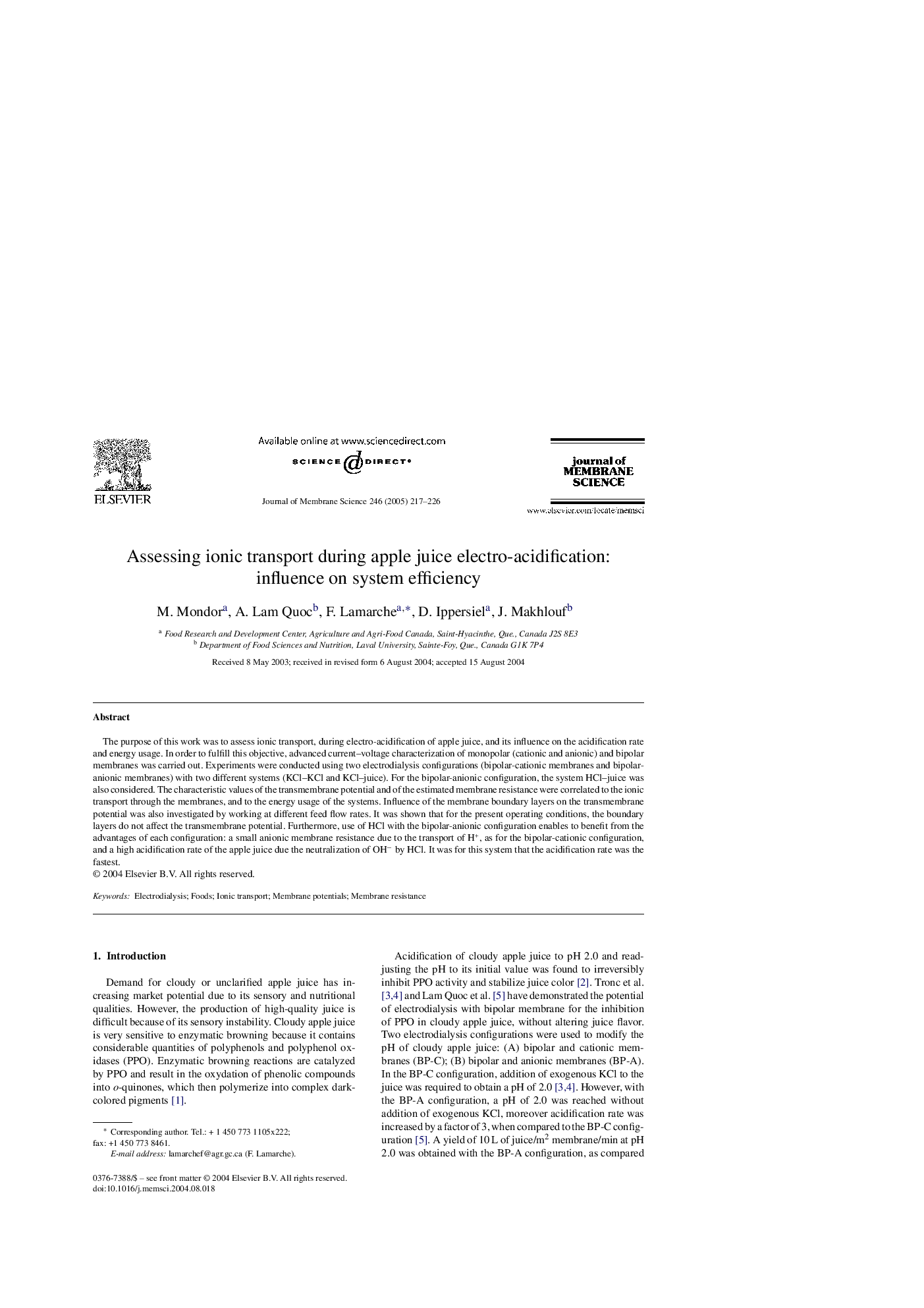| Article ID | Journal | Published Year | Pages | File Type |
|---|---|---|---|---|
| 10388950 | Journal of Membrane Science | 2005 | 10 Pages |
Abstract
The purpose of this work was to assess ionic transport, during electro-acidification of apple juice, and its influence on the acidification rate and energy usage. In order to fulfill this objective, advanced current-voltage characterization of monopolar (cationic and anionic) and bipolar membranes was carried out. Experiments were conducted using two electrodialysis configurations (bipolar-cationic membranes and bipolar-anionic membranes) with two different systems (KCl-KCl and KCl-juice). For the bipolar-anionic configuration, the system HCl-juice was also considered. The characteristic values of the transmembrane potential and of the estimated membrane resistance were correlated to the ionic transport through the membranes, and to the energy usage of the systems. Influence of the membrane boundary layers on the transmembrane potential was also investigated by working at different feed flow rates. It was shown that for the present operating conditions, the boundary layers do not affect the transmembrane potential. Furthermore, use of HCl with the bipolar-anionic configuration enables to benefit from the advantages of each configuration: a small anionic membrane resistance due to the transport of H+, as for the bipolar-cationic configuration, and a high acidification rate of the apple juice due the neutralization of OHâ by HCl. It was for this system that the acidification rate was the fastest.
Related Topics
Physical Sciences and Engineering
Chemical Engineering
Filtration and Separation
Authors
M. Mondor, A. Lam Quoc, F. Lamarche, D. Ippersiel, J. Makhlouf,
